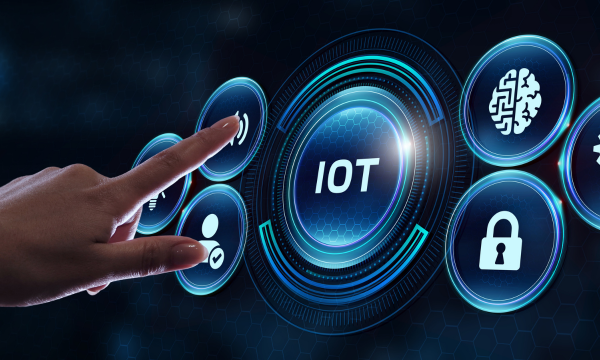The Internet of Things (IoT) is revolutionising industries across the globe, and the healthcare sector is no exception. Within the realm of medical devices, IoT has emerged as a transformative force, enabling devices to connect, share data, and deliver real-time insights. For India, a country with diverse healthcare challenges, the integration of IoT in medical devices presents an opportunity to bridge gaps in accessibility, efficiency, and quality of care.
IoT in Medical Devices: An Overview
IoT refers to a network of interconnected devices that communicate with one another to collect, share, and analyse data. In the context of healthcare, IoT-enabled medical devices can monitor patients remotely, assist in diagnostics, and even predict health trends using advanced analytics.
For example, wearable health devices that track vital signs, smart inhalers for asthma management, and connected glucose monitors are all powered by IoT. These devices not only enhance patient care but also empower healthcare providers with actionable data.
Applications of IoT in Medical Devices
One of the most impactful applications of IoT in medical devices is remote patient monitoring. Connected devices can track a patient’s health status and transmit data to healthcare professionals in real-time. This is particularly beneficial for managing chronic diseases such as diabetes, hypertension, and cardiovascular conditions. Patients in rural or underserved areas can also receive quality care without frequent hospital visits.
Another application is in diagnostic devices. IoT has enabled the creation of smart diagnostic tools that provide faster and more accurate results. For instance, connected imaging devices can send scan data directly to specialists for analysis, speeding up the diagnostic process.
In hospitals, IoT is transforming the way medical devices are managed. Asset tracking systems powered by IoT help hospitals locate critical equipment such as ventilators and infusion pumps, ensuring efficient utilisation and reduced downtime.
Additionally, IoT devices are playing a crucial role in surgical precision. Robotics-assisted surgeries often rely on IoT systems to communicate between devices and ensure accurate movements, enhancing patient outcomes.
Benefits of IoT in Medical Devices
The integration of IoT in medical devices brings several benefits, starting with improved patient outcomes. By enabling real-time monitoring and data sharing, IoT ensures timely interventions, reducing the risk of complications.
Cost efficiency is another advantage. Remote monitoring and early detection help reduce the need for hospitalisation and in-person consultations, making healthcare more affordable. For hospitals and clinics, IoT minimises operational inefficiencies, lowering overall costs.
For healthcare providers, IoT facilitates data-driven decision-making. Advanced analytics, powered by the continuous flow of data from IoT devices, can identify patterns, predict health trends, and guide treatment plans.
IoT also enhances personalisation in healthcare. Devices can adapt to individual needs, offering tailored recommendations and interventions based on a patient’s unique health profile.
Business Opportunities in the IoT-Enabled Medical Device Market
The Indian medical devices market is ripe with opportunities for IoT-driven innovation. Startups and entrepreneurs can focus on developing cost-effective solutions tailored to the needs of India’s diverse population.
For instance, affordable IoT-enabled wearables that cater to rural markets can address the issue of accessibility. Similarly, businesses can develop solutions for specific segments, such as elderly care or maternal health, where IoT devices can provide significant value.
Telemedicine platforms that integrate IoT devices are another area of growth. These platforms can offer end-to-end solutions, from monitoring to diagnosis and consultation, creating a seamless healthcare experience for users.
Export potential is also significant. By leveraging India’s manufacturing capabilities, companies can produce IoT-enabled devices for global markets. The key lies in adhering to international quality standards and innovating to stay ahead in this competitive field.
Challenges and Solutions
Despite its immense potential, the adoption of IoT in medical devices comes with challenges. Data security is a primary concern, as IoT devices collect and transmit sensitive patient information. Companies must invest in robust encryption protocols and comply with data privacy regulations to ensure user trust.
Another challenge is the high initial cost of IoT devices, which may limit accessibility in price-sensitive markets like India. To overcome this, businesses can explore public-private partnerships and government incentives to make IoT solutions more affordable.
Connectivity is also a critical factor. IoT devices rely on stable internet connections, which can be a limitation in remote areas. Expanding network infrastructure and leveraging technologies like 5G can address this issue.
Finally, the complexity of integrating IoT systems with existing healthcare infrastructure can be a hurdle. Companies can mitigate this by offering interoperable solutions that seamlessly integrate with diverse healthcare platforms.
Future Trends in IoT for Medical Devices
The future of IoT in medical devices is bright, with several trends shaping its trajectory. Artificial intelligence (AI) and machine learning will play a significant role in enhancing IoT capabilities, enabling predictive analytics and personalised care.
The advent of 5G technology will further improve connectivity, allowing for faster data transmission and more reliable IoT networks. This will enable advanced applications like real-time remote surgeries.
Sustainability is also emerging as a priority. Companies are exploring eco-friendly designs and energy-efficient systems for IoT devices, aligning with global sustainability goals.
The integration of IoT with blockchain technology is another trend to watch. Blockchain can enhance data security and ensure transparent data-sharing practices, addressing one of the major concerns associated with IoT adoption.
Conclusion
IoT is reshaping the medical devices market, offering unparalleled opportunities to improve healthcare delivery and patient outcomes. For India, a country with diverse healthcare needs, IoT presents a way to bridge the gaps in access, affordability, and quality.
By addressing challenges like data security and connectivity, businesses can unlock the full potential of IoT-enabled medical devices. Whether you’re a startup looking to innovate or an established player aiming to expand, the IoT revolution in healthcare offers a promising path forward.











